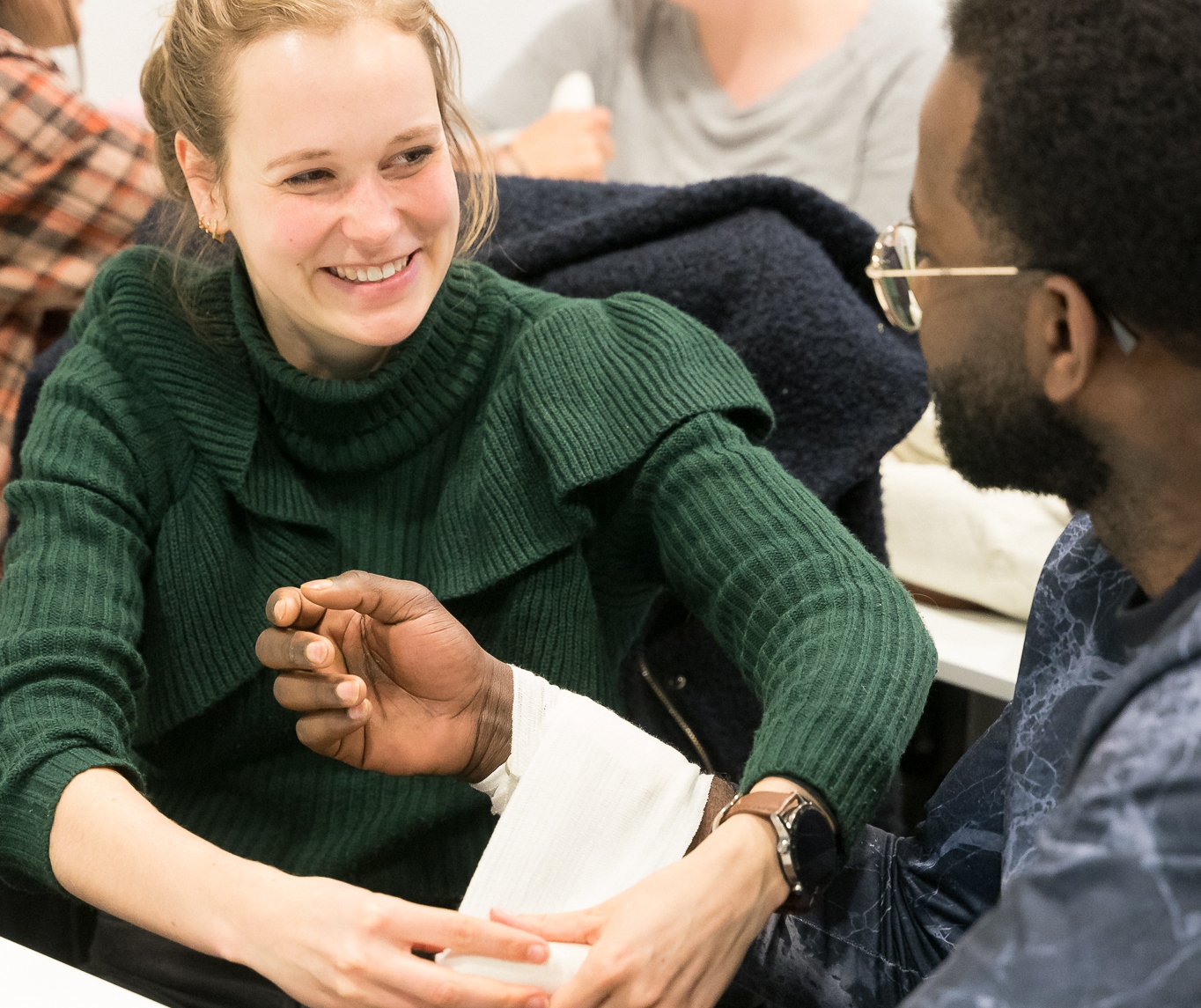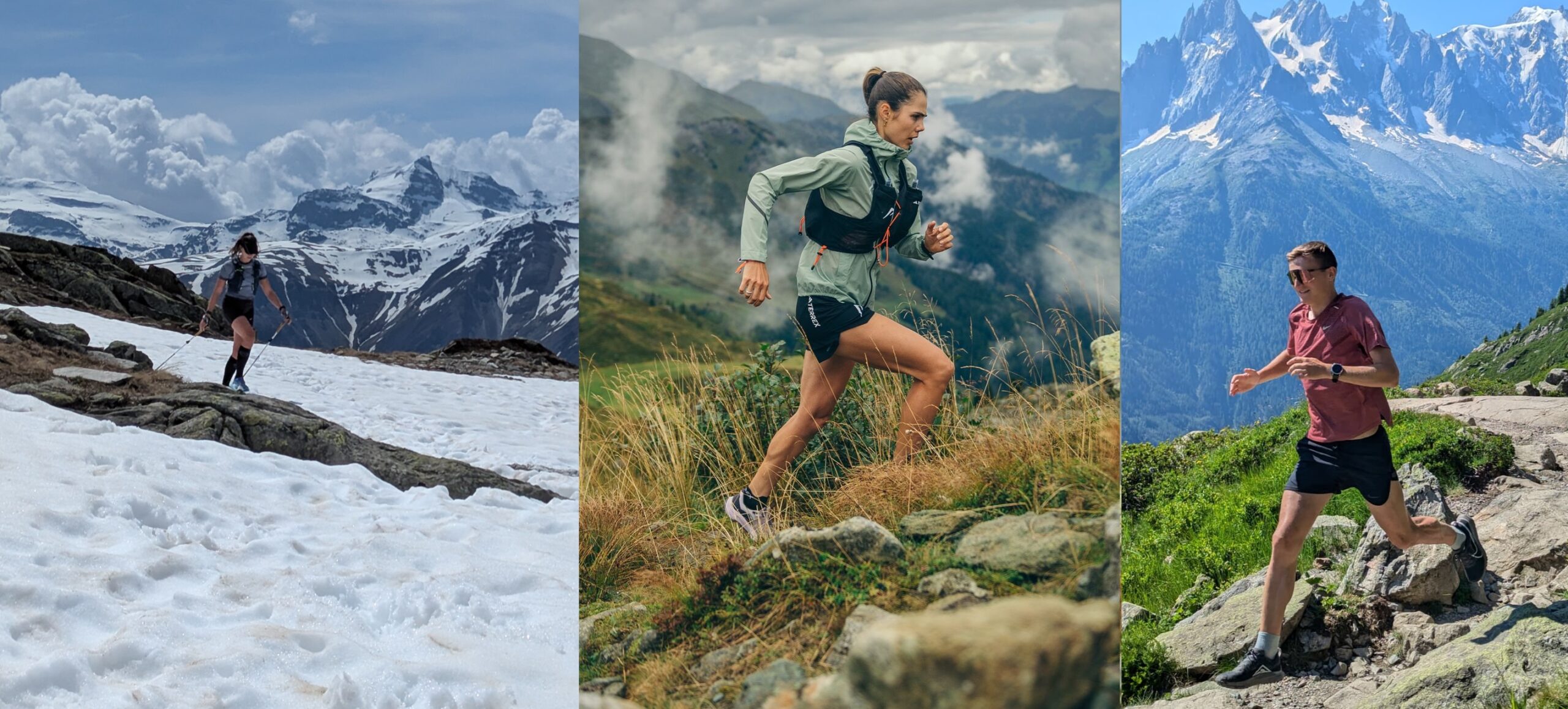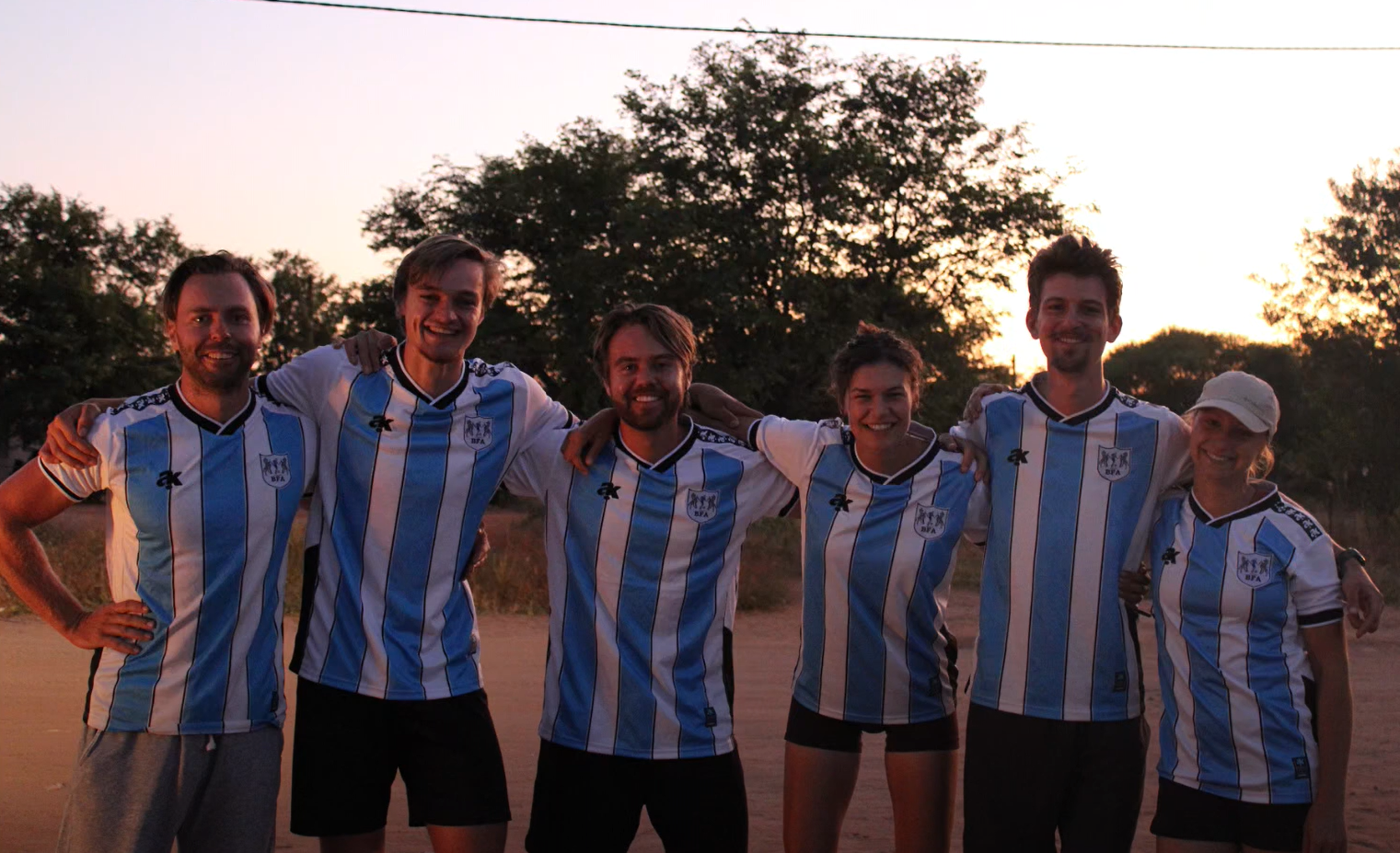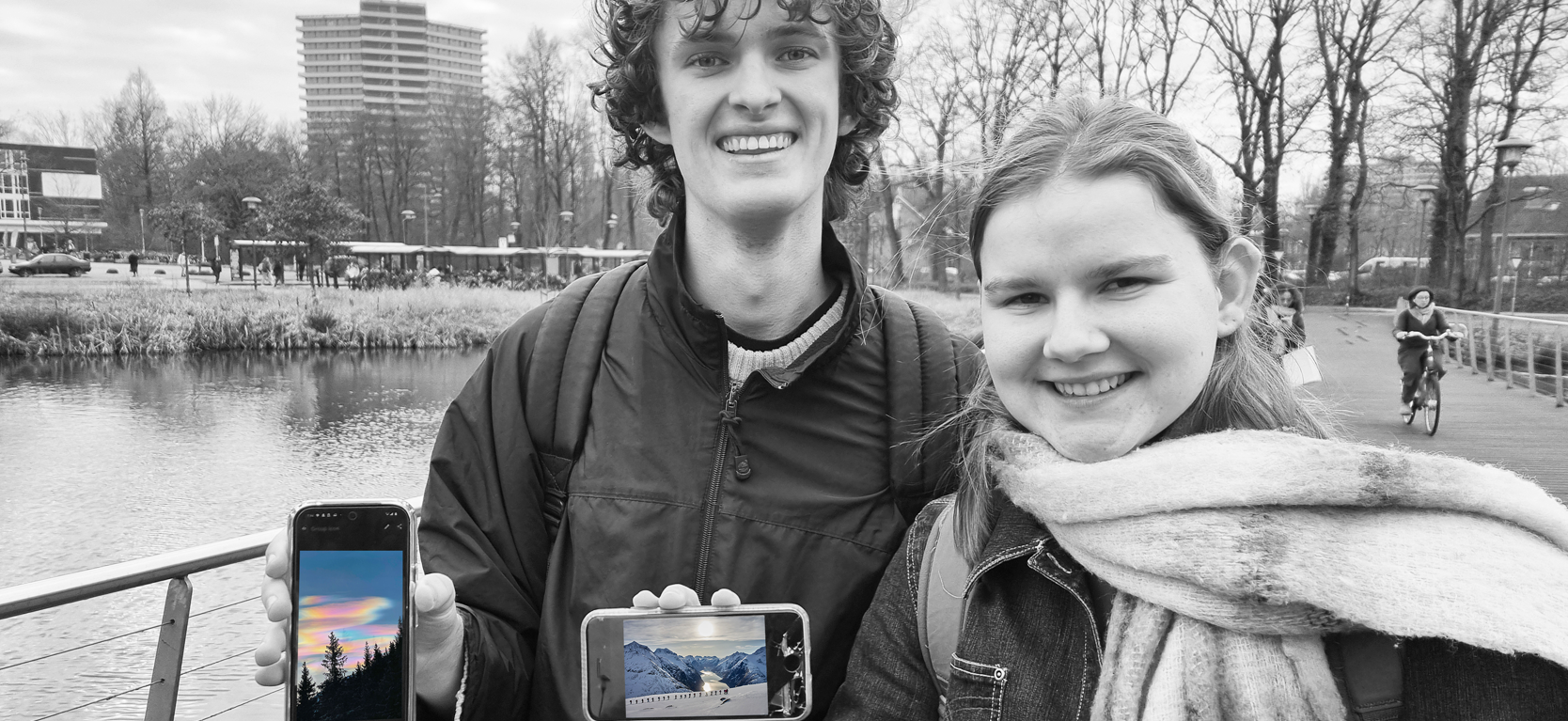‘Today we are going to talk about skin wounds. Why should you keep them dry?’ Rikkie de Best, course instructor, opens the third lesson of the first aid course with a practical question. A student answers: ‘To speed up the healing process.’
Text Sarah Scheid.
That is the right answer, confirms De Best. ‘If you cut your finger, you can use a finger bob to stop the bleeding and protect the wound.’ A finger bob is a small roll of bandage placed over the injury and held in place with tape. In the meantime, her colleague Marian van Hunnen is preparing a bleeding cut in her thumb with fake blood. ‘Help! Look Rikkie, I cut myself with a kitchen knife’, she calls nervously. ‘It’s not a deep cut, we can roll a finger bob around it’, says De Best calmly.
Once De Best has successfully treated the wound, the twelve course participants are invited to try to apply a finger bob to their table neighbour’s finger. The students focus on this task and after a few minutes De Best interrupts: ‘You can also find material on how to apply different plasters to smaller wounds in the online course material.’ The first aid course, that is given every period by the student desk of the Red Cross Wageningen, consists of five practical lessons and online material for self-study.
Treating wounds
Suddenly Van Hunnen steps in again, this time with a huge fake wound on her forearm: ‘Help, I had an accident!’, she cries and she presses a piece of cloth on the wound. De Best assists and explains: ‘Pressing a bandage on the wound stops the bleeding. Use a trauma bandage as well. Wrap that around the wound to increase the pressure.’ Then the course participants have to try it themselves.
Help! I had an accident!
During the practical lesson, students learn several techniques to perform the binding and first-aid treatment of small and severe wounds. In the previous lessons participants learned about resuscitation, the stable side position and choking on babies, children and adults. The final lesson will remind them of everything they have learnt in the course. De Best will then test the students by asking questions about treatment in different situations.
Primary school
The first aid course is not only given to student, says Luna Snijders, former coordinator of the Red Cross first aid course. ‘The Red Cross student desk also gives first aid courses in primary schools. This is often the only opportunity for Dutch pupils to get in touch with first aid, apart from a leaded course. In high school and at the beginning of university it is almost never a topic. I only heard of the courses when I joined the Red Cross in my second year in Wageningen.’
The first aid course usually costs 260 euros, with a special prize for students of 90 euros. For Wageningen students the course is offered for free: the university pays. After finishing the course, students receive a certificate. With this certificate, they can join the Red Cross in Renkum-Wageningen, says Snijders. ‘And with the certificate, you can also help out as a first aider at festivals.’
Want to know more? Follow the Red Cross Student desk at Instagram or Facebook, or sign up for a first aid course here.

 Course participants try to use a trauma bandage. Photo Sven Menschel
Course participants try to use a trauma bandage. Photo Sven Menschel 

